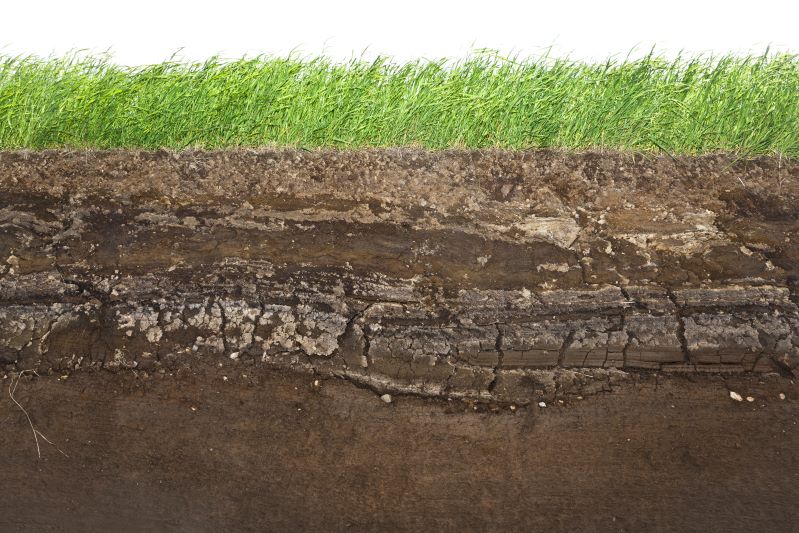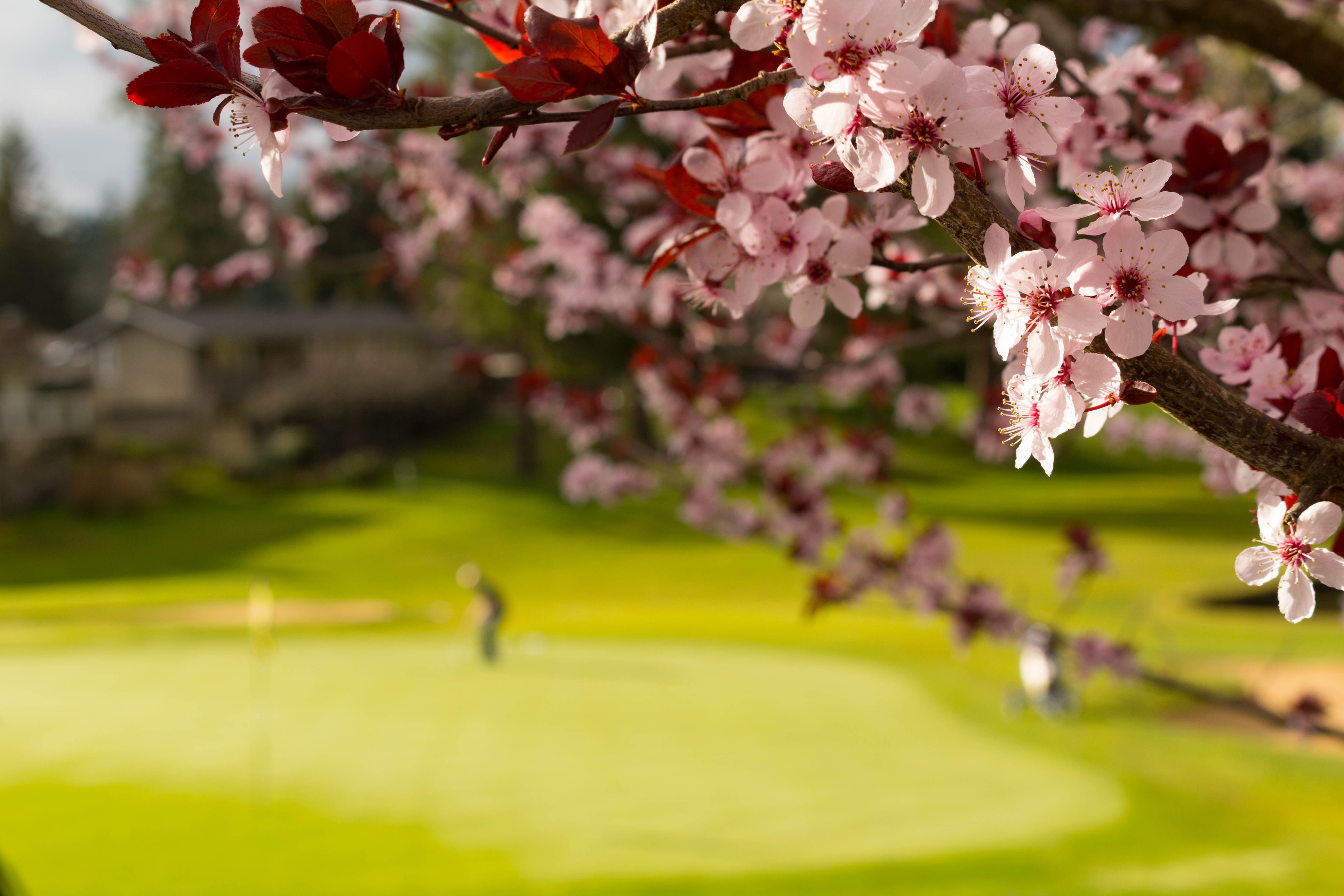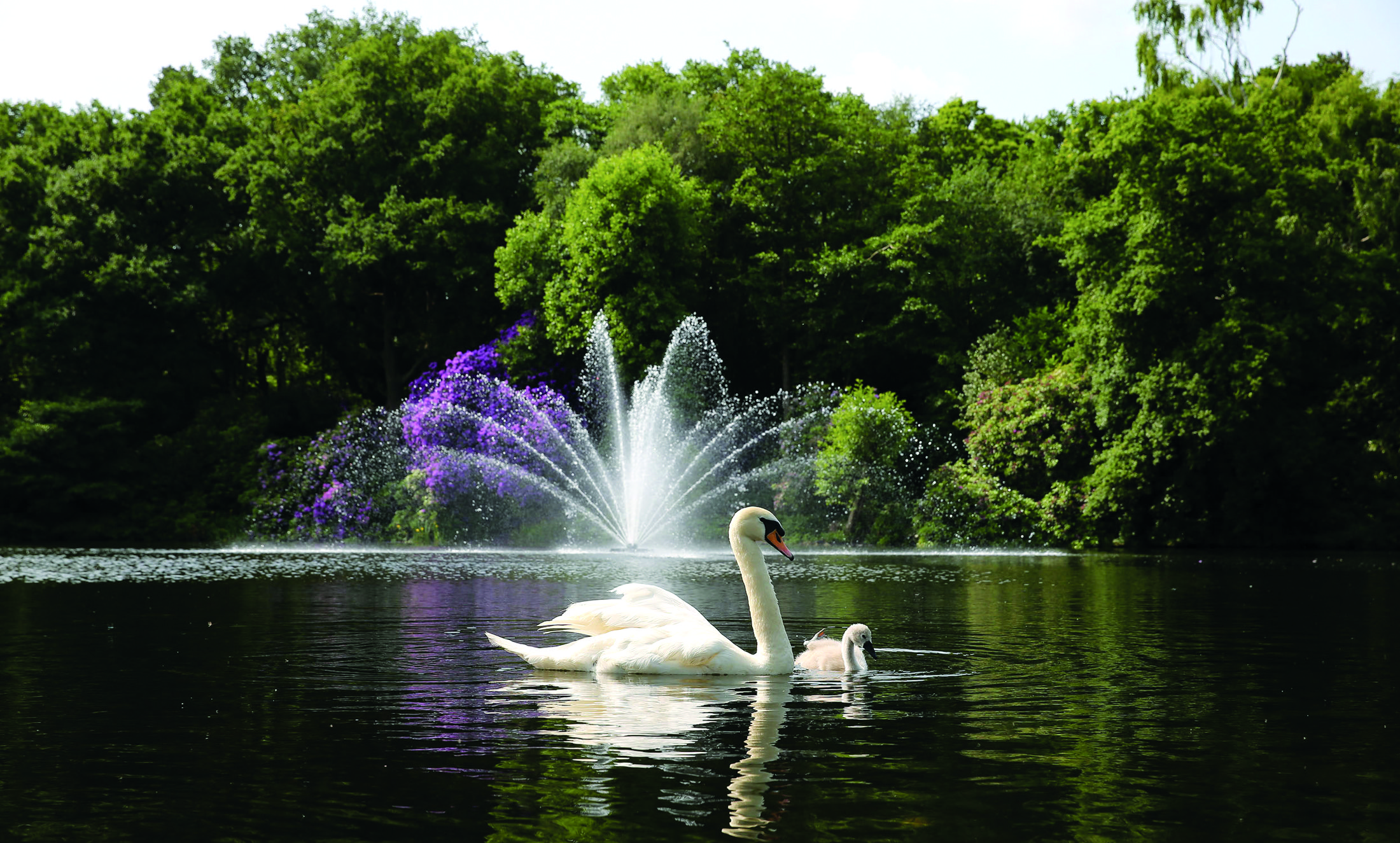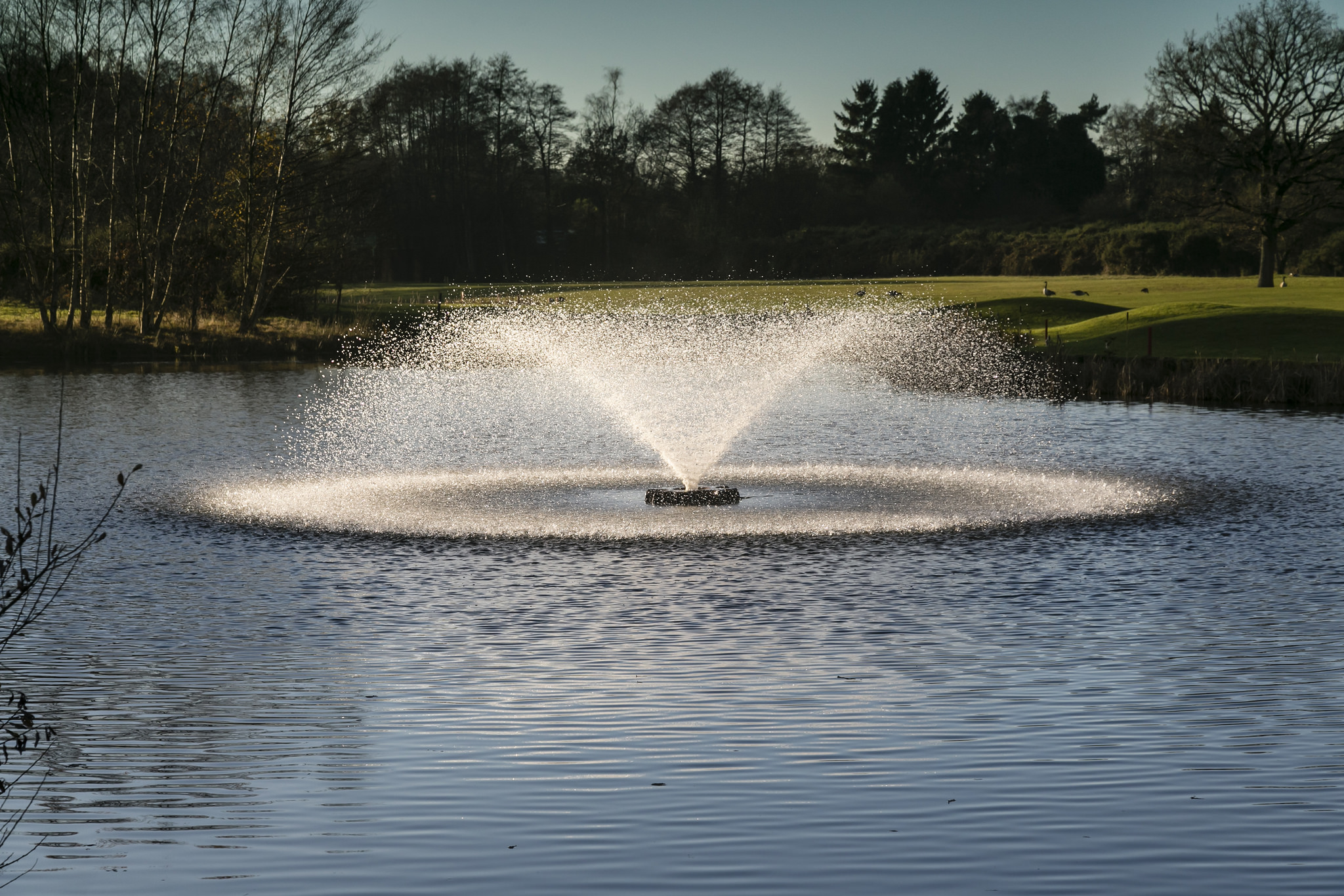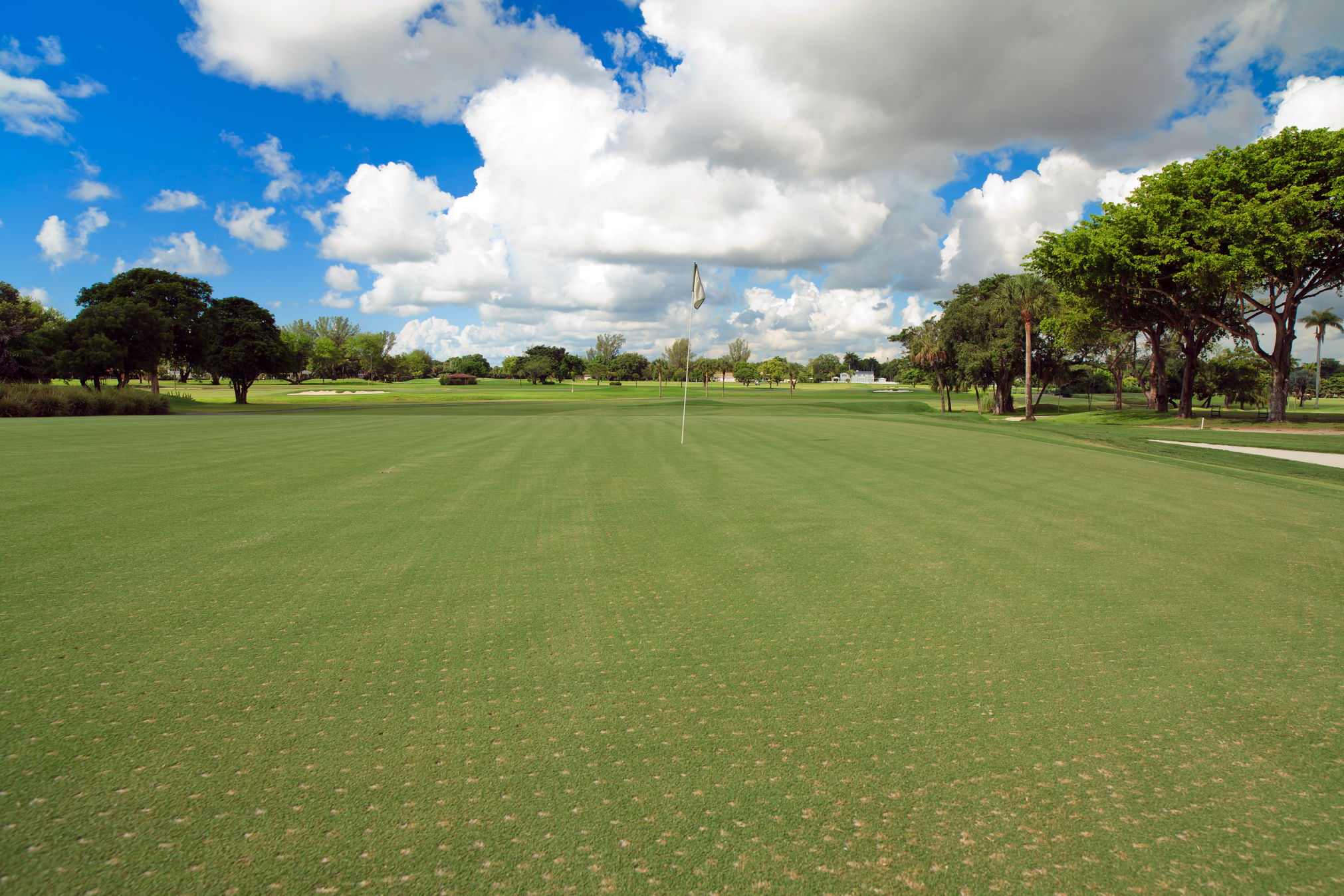- CONTACT US
- MOWERS
- VEHICLES
- APPLICATION
- Golf
- AERATORS
- VEHICLES
Lake and Pond Dynamics
CONTENTS
FEATURED STORIES

Reg Varney
Former International Regional Manager for Otterbine
Reading time: 10 minutes
Inside Water Management Techniques
Ponds and lakes, whether man made or not, have a natural life cycle. Before people began to impact the environment, this progression took hundreds, even thousands of years. Ponds and lakes now can be created, live, and die within decades. Much of the reason for this lies in the fact that water is one of our most abused and least understood natural resource. We allow our ponds and lakes to be unmanaged and therefore, they become unmanageable.
We don’t need to remind ourselves of the challenges we face in terms of the volumes and quality of water used, even in areas that we believed were immune from shortages. This means more often people are turning towards unconventional resources such as recycled water.
Recycled water has the advantage of being located close to the places of use, being available in large quantities throughout the year and rich in useful nutrients. In the case of recycled water, there are large quantities that can be utilised to water plants and crops, such as irrigated agriculture or green spaces, instead of releasing the water back into the environment.
Recycled water is now becoming an essential part of the pond and lake landscape, due to the very nature of the water chemistry, being that it’s recycled. Any pond or lake used as a reservoir for this type of water will almost inevitably deteriorate into a eutrophic condition in a short space of time if not properly and proactively managed.
“Successful pond and lake management, especially for recycled waters, begins with a basic understanding of how the three mechanisms that operate in a pond or lake, affecting its overall condition”, says Reg Varney, international sales manager for water aeration specialist, Otterbine.
Definition of eutrophic:
Eutrophication is when a body of water becomes overly enriched with minerals and nutrients which induce excessive growth of algae and may result in oxygen depletion of the water body.
1. Thermal stratification
Temperature layering, or thermal stratification, occurs when the sun warms the pond surface water causing it to become less dense. As the warming process progresses, the water becomes separated, or stratified into layers. Densities, created by the varying water temperatures, cause this layering to occur. Colder water settles on the pond bottom and the water gradually gets warmer in layers as you get closer to the surface. Because the surface layer remains warm, algae growth thrives and oxygen is not retained as well as in cooler water temperatures.
2. Nutrients
Like any living body, ponds accumulate and digest organic matter. Organic nutrients containing phosphorous and nitrogen are essential to pond plant life, but you must keep the nutrient level in an ideal balance to avoid severe weed and plant growth. A pond may become eutrophic, which is too rich in dissolved nutrient, due to run off from nearby turf areas, leeching fertilisers or from domestic septic systems, leaves, grass clippings or other organic waste blown or dumped into the pond. In addition, the algae and aquatic weeds living in the pond will eventually die and contribute to the nutrient level. As the nutrient levels rise, the rate of plant growth will also increase, initiating the gradual consumption of the pond by organic sludge.
3. Oxygen
The third and final mechanism is oxygen. Oxygen is used by the pond to clean itself of excess nutrients through the action of aerobic bacteria. In oxygen depleted ponds, some metals and the nutrients phosphorous and ammonium (a nitrogen compound) become increasingly soluble and are released from the pond sediments to recycle through the water. Mixing events, such as cold fronts with winds and cold rains, can transport some of these released nutrients to the lake surface where they can stimulate increased algae production.
As a pond ages and the nutrient level rises, the amount of algae and aquatic plant life increases. Naturally, these plants will die and sink to the bottom of the pond and begin to decompose. This is referred to as a biomass problem. However, due to thermal stratification, the upper and lower layers of the pond do not mix and therefore the oxygen needed to support pond life does not reach the bottom of the pond. An oxygen depletion problem in the lower layers of the pond is now created and may result in aquatic life problems such as fish kills, leading to foul odours and stagnant water.
Pond problem solving
There are several methods available to help solve some of the problems ponds and lakes are subject to;
Mechanical control can be used to remove algae, aquatic plants and their root systems. This solution is best facilitated in medium to large ponds and would be achieved by dredging, weed harvesting, roto-tilling or raking. However, this method is a temporary solution because it treats the symptoms rather than the cause. Also, it is relatively expensive, labour intensive and will need to be repeated as the plants regenerate.
Chemical control is the most common method of pond and lake management. Herbicides are applied to the pond to kill the algae and plants. This method is quick and effective but may, in the process, produce other problems such as fish kills and odours. In addition, chemical control, like mechanical control, treats only the symptoms of the problem, is expensive, often requires permits and may damage surrounding turf and plants if the treated water is used to irrigate other areas.
Biological control is a third method of pond management. One application is the introduction of weed eating fish like koi or grass carp. These fish can be quite effective in keeping excessive weed growth under control. They are inexpensive over the long term and require no labour or upkeep once they are in the water. They are hearty feeders; though, they will consume algae only if their preferred aquatic plants are not available. Plants utilise photosynthesis in the pond to create dissolved oxygen, so if all the aquatic plant growth in the pond and a major source of oxygen is removed, this can result in odour and water quality problems.
A second biological control method is the introduction of wetlands at the areas where water or runoff flows into the pond. The wetland area can perform two functions. First, it will slow the progress of water into the pond, reducing erosion and flooding problems. Secondly, the intensive plant growth in a wetland area acts as a nutrient sink for the high nutrient water flowing into the pond. The plants in the wetland will actually absorb nutrients before they can enter the pond. This can result in a higher water quality due to lower organic nutrient levels, if a balance can be found.
Lake dye can also be effective in improving the appearance of a pond or lake. They work to block penetration of sunlight into the pond, subsequently slowing the growth of aquatic plants and creating a dark blue hue.
Finally, aeration is the most effective, long-term pond and lake management tool and should be used in conjunction with any of the aforementioned treatments. If natural aeration isn’t working, then mechanical aeration is the option. Aeration by definition is the mechanical addition of oxygen to the water. By depositing large amounts of oxygen into the water, aeration encourages strong aerobic bacteria to clean the pond of organic nutrients and waste. High oxygen levels also prevent anaerobic digestion that leads to nutrient cycling and foul odours. The circulation rate produced by aeration breaks through the thermal stratification and distributes oxygen to all parts of the pond. By pulling cooler water to the surface of the pond, algae growth is slowed and the water’s Ph. level is balanced. This process reduces odours. Aeration is economical, supports the natural ecosystem and most importantly attacks the source of the problem continuously. In addition, spray type aerators are aesthetically pleasing to any landscape.
By taking a proactive approach to water quality management you can help ensure that your water features are clean, functional and aesthetically appealing for many years to come.
For more detailed pond and lake management information, contact Reesink Turfcare on 01480 226800 or email info@reesinkturfcare.co.uk or visit reesinkturfcare.co.uk.
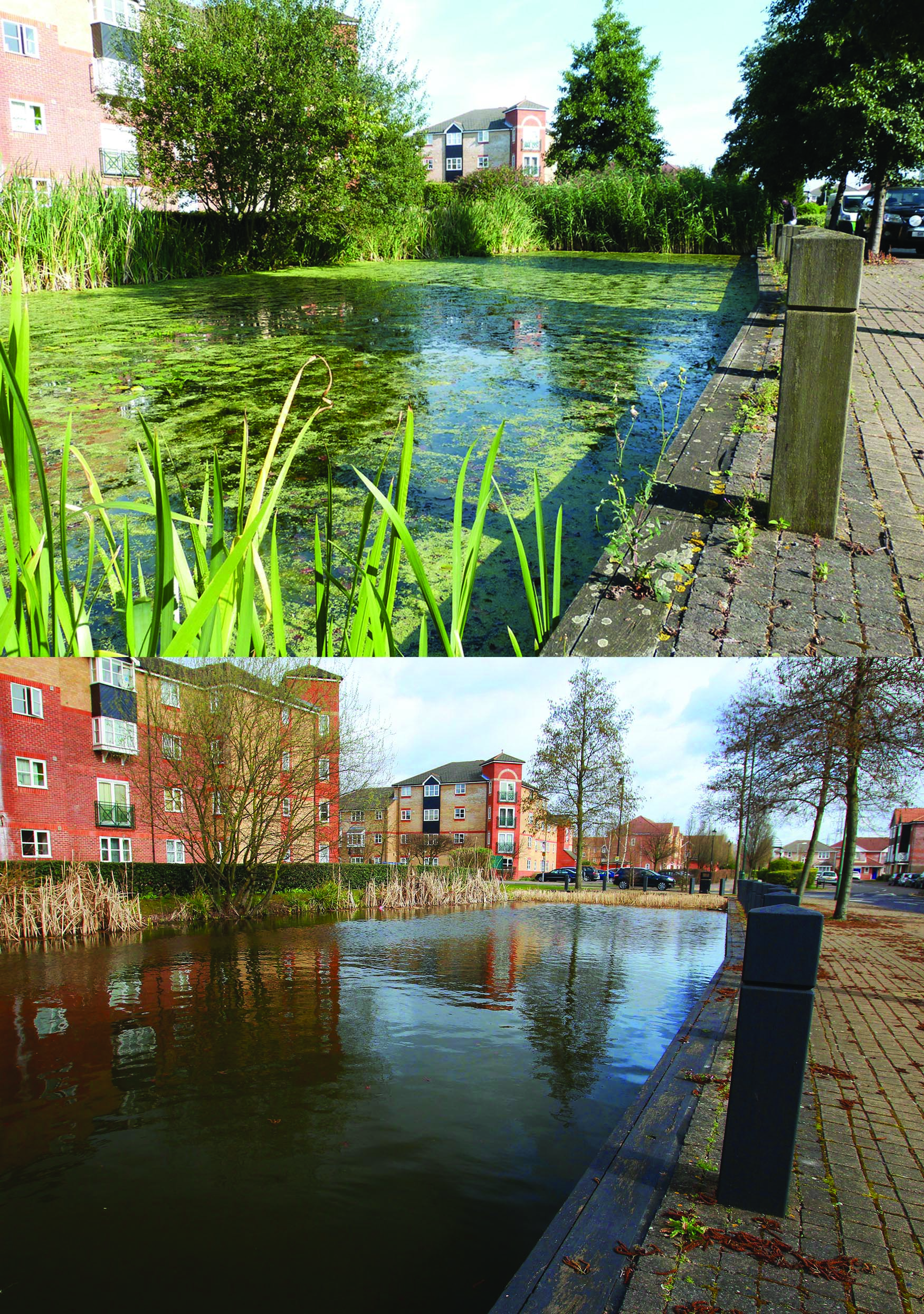
These before and after shots show how canals and lakes can be transformed with Otterbine aerators.
July 2019
Reesink UK LTD | 1-3 Station Road, St Neots PE19 1QF | Registered in England
Reesink UK LTD is authorised and regulated by the Financial Conduct Authority.










